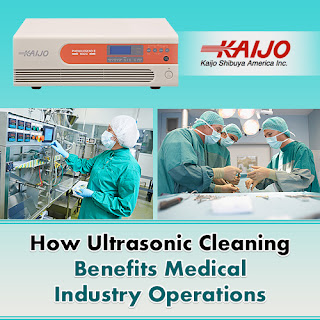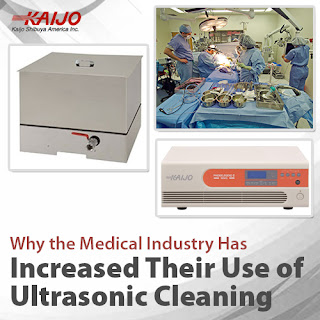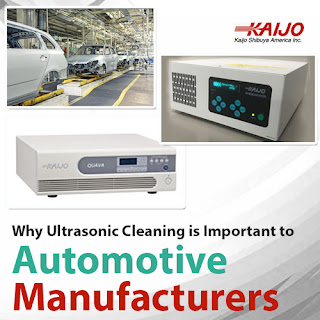When components for medical devices are not cleaned properly at every stage of the manufacturing process, they may introduce contaminants into the medical environment. Ultrasonic cleaning of these components ensures that they are free from harmful particles and dangerous substances when they are incorporated into the medical device.
Traditional cleaning methods such as manual scrubbing and prolonged soaking in harsh chemicals may miss contaminants in hard-to-reach areas. Besides, these aggressive, toxic chemicals may leave harmful traces on the component.
Medical ultrasonic cleaners can clean medical device components entirely and rapidly, leaving no traces on the device. Ultrasonic cleaners generate microscopic bubbles in the cleaning solution. As the bubbles form and collapse in tune with the ultrasonic frequency, they create a powerful scrubbing action that dislodges contaminating particles and removes unwanted film and residues from the surfaces of the parts to be cleaned.
The medical device components are soaked in the cleaning solution either by placing them directly into the ultrasonic cleaning tanks or placing them in the basket, which is then submerged. Wherever there is a cleaning solution, the bubbles form and remove impurities from the surface of these components. The cleaning solution penetrates everywhere, into holes, along intricate and complex shapes and inside crevices.
The ultrasonic cleaner uses only plain water with a bath at room temperature. Still, cleaning can be sped up by adding mild detergent or heating the cleaning solution to remove more stubborn dirt (such as oil and grease contamination). Ultrasonic cleaning does not need harsh cleaning chemicals or manual scrubbing, making it environmentally friendly while improving the overall cleaning performance.
Ultrasonic cleaning also doesn't need monitoring or supervision, making the cleaning process completely safe. Operators place the components into the tank filled with the cleaning solution, set a timer, and then come back later to remove the clean components.
The complete article, Using Ultrasonic Cleaning for Medical Device Components, explains more about Kaijo Shibuya’s experience and expertise in providing medical ultrasonic cleaners. If you have questions, or would like to set up a free consultation, email info@kaijo-shibuya.com or call 408-675-5575.


















